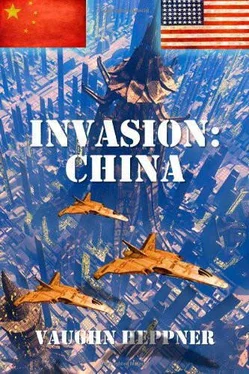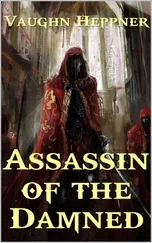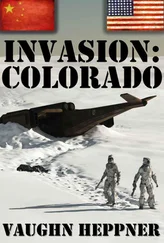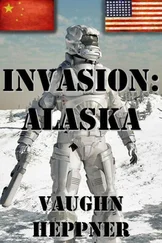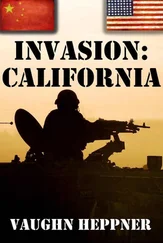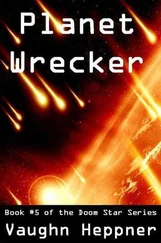Stan recalled McGraw pretending to be drunk over a year ago. The general had fooled him then—not today.
“I’ve been keeping the Militia people at bay,” McGraw said. “It isn’t easy. They want your boy pretty badly. Harold even mentioned it the other day. I told him not to upset my Behemoth regiments, as they’re the answer to defeating the Chinese.”
“I just want to fight for my country, sir,” Stan said. “Not play politics.”
“Yes, I can see that. I don’t mean to drag you into political struggles. It’s a dirty business and takes a certain kind of mindset. You’re the keenest mind we have, Higgins. I thought—” The general shook his head. “Never mind, old son, I’ll let you remain as pure as the driven snow. Some of us have to take on ugly burdens so the rest of you can—”
The general’s red nostril’s flared. “You wear the Medal of Honor well. It suits you, old son. I want to ask you some questions about the coming offensive. We’ll keep this strictly military, okay?”
“Thank you, sir,” Stan said.
“Don’t think your threat frightens me, though.”
It frightens me , Stan thought. I can’t believe I said that . Aloud, he said, “I understand, sir. I get too hot under the collar sometimes when it comes to my family.”
McGraw reached into his coat and pulled out a plastic-coated map. He unrolled it and set the thing on the floor, going down onto his hands and knees.
“Come on. Look at this with me. I want your opinion on a few of my latest ideas.”
Stan Higgins soon found himself on the church floor, listening and giving his opinions. He kept wondering if this was just a cover, and he speculated what this year of fighting, political and military, was going to bring to America, the former land of the free.
-1-
Strategic Interlude I
From Tank Wars , by B.K. Laumer III:
The 2041 Oklahoma-Texas Offensives:
The greatest tank and tank destroyer on both sides fought in the coming battles, the American Behemoth and the Chinese Mobile Canopy AntiBallistic Missile system, which soldiers dubbed the laser tank. Yet these giants were always in short supply and often failed to materialize in the location needed. The far more numerous American Jefferson and Chinese T-66 multi-turreted tank provided the mainstay for the many armor brigades and divisions.
The newer American main battle tank, the MBT-8 Jefferson, was radically different in appearance from the Behemoth or even the old M1A3 Abrams. The Jefferson was five meters long and 2.4 meters tall, making it the smallest MBT on the battlefield. It had better high-tech materials than the M1, making it many times more deadly. Like the Behemoth, it had magnetically balanced hydraulic suspension and armored tracks. Unlike the Behemoth, it had inner wheels for highway movement, giving the Jefferson greater mobility. Along with its heavy armor, it had a huge 175mm main gun, which fired rocket-assisted shells: antipersonnel, antiarmor or antiair. The fire control computer could lock onto targets and direct a six-salvo round in two minutes. The tank had six beehive flechette launchers and 25mm autocannons to blast down most incoming enemy missiles or shells. It was a vast improvement over the former mainstay, the M1A3.
The Chinese T-66 was an older model by many years. It also happened to be a World War I dream: a land battleship. It had three turrets, each with a 175mm smoothbore gun. It fired hypervelocity, rocket-assisted shells. It was over one hundred tons, making it nearly twice as heavy as an Abrams. Six 30mm autocannons and twenty beehive flechette defenders made it sudden death for any infantryman out in the open and helped to knock down or deflect most enemy shells. The main gun tubes could fire Red Arrow antiair rounds, making it a deadly proposition for attack-craft trying to take it out. It had a magnetically balanced hydraulic suspension, meaning the gunners could fire with astounding accuracy while moving at top speed.
The opening battles proved the effectiveness of each tank, although the greater number of Behemoths this year became a nightmare for the Chinese and the tri-turreted crews.
From Military History: Past to Present , by Vance Holbrook:
WORLD WAR III
OPERATIONS IN 2041
Global State of Affairs
The situation regarding Sino dominance vis-à-vis the rest of the world had changed considerably since 2039. At that time the Pan-Asian Alliance stood as the world colossus, with the South American Federation and the German Dominion as its staunch partners. Nothing seemed beyond their grasp, including a continental invasion of North America.
Two years of war brought bitter changes. Chinese arms received serious shocks in southern California and mid-America numbering in millions of casualties. Unusual for China considering its history, the losses shook the nation. Many attributed this to the one child per family policy, as every casualty now might wipe out a family line. The ensuing rebuilding of the invasion army disrupted national life and caused more than one outbreak of domestic rebellion. The Pacific War—fought on the US side with submarines, missiles and long-range drones—took a critical toll of the PAA merchant marine and surface vessels, straining the Chinese economic infrastructure.
Yet those changes failed to compare to the weakening and, in some cases, the desertion of allies. The North American War revealed the severe limitations of SAF military formations. The best Brazilian units had taken irreplaceable losses, while the remaining South American divisions began to show a decided reluctance to engage vengeful American forces. The greatest damage came with the exit of the German Dominion.
Several factors shook the GD to its foundations, bringing about a drastic realignment: 1) the annihilation of the North American Expeditionary Force in 2040 and its Atlantic Fleet; 2) the assassination of Chancellor Kleist; and 3) the discovery of Chinese backing of the “Shia” nuclear attack against the North African Desalinating Plant. A fundamental political shift took place in London, Paris, Berlin and Rome. The new European Union repudiated its Chinese alliance and signed an accord with the Russian-dominated Slavic Coalition. The EU rehabilitated General Mansfeld and sent him east with the remainder of the AI Kaisers and other robotic brigades. They would aid the Russians in the defense of the Far East.
Even China’s Pan-Asian Alliance began to creak with fatigue. In Japan particularly and throughout the Philippines, the populace had grown war-weary and sick of the casualty lists. More ominously, rumbling stomachs due to poor crop yields encouraged mass food riots and acts of sabotage. Chairman Hong’s favored status rating—where he gave some nations better food supplies than others—poisoned Sino-Japanese relations even as it solidified Korean and Vietnamese harmony.
This weakening of Greater China compared to its strongest neighbors caused a fundamental reassessment of the situation. Fear of Sino military power waned as the Russians and Indians realized two things. One, Chairman Hong had grandiose dreams and aspirations that only military force could halt. Two, this was the moment to clip Chinese wings and put an end to destabilizing Sino adventurism.
American diplomacy, which had cast about for allies for several years now, seemed about to achieve notable successes.
Stinging from defeats in 2023 in the Far Eastern provinces, Russia had carefully bided its time and rebuilt its military. The Russian High Command carefully studied the 1945 Manchurian Invasion in the final days of WWII against Japan and calculated if a Far Eastern Offensive might succeed now. However, some in the Kremlin urged caution. China was still the most powerful nation on Earth, well able to defend itself. So, while Russia continued to strengthen its western Siberian army groups, the leadership hesitated to launch such a fateful assault.
Читать дальше
